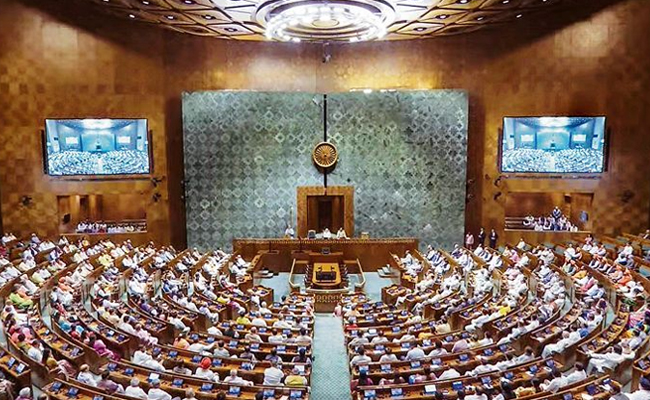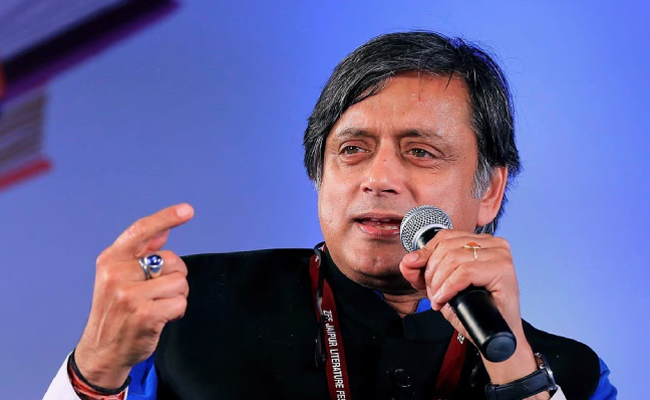Bengaluru: In a recent statement made by the Ministry of Finance on Wednesday, May 1, it was announced that the Goods and Services Tax (GST) revenue collection for April 2024 has reached an unprecedented high, soaring to Rs 2.10 lakh crore. The GST collections breach the landmark figure of ₹2 lakh crore for the first time. The data revealed a 12.4% year-on-year growth in gross revenue, with net revenue (after refunds) standing impressively at ₹1.92 lakh crore, showcasing a notable 17.1% year-on-year growth.
The news sparked a conversation on social media platforms, with Indian businessman TV Mohandas Pai expressing concern over the apparent slowdown in the growth rate of GST in Karnataka. In a tweet directed at Chief Minister Siddaramaiah and other key figures, Pai highlighted the worrisome trend and called for a review by the Government of Karnataka (GOK).
Responding to Pai's apprehension, the additional Chief Secretary to the Karnataka government, LK Atheeq, offered a clarifying perspective. Atheeq contested Pai's assertion, emphasizing that the figures cited by Pai pertain solely to the month of April 2024 compared to April 2023. He further provided data, presenting a comparative analysis of Karnataka's GST collection growth rate in the fiscal year 2023-24. According to Atheeq, Karnataka has witnessed an 18% growth rate in GST collection, outperforming the national average of 12%. He also juxtaposed Karnataka's growth with other states such as Maharashtra and Gujarat, both recording growth rates of 18% and 10% respectively.
Atheeq stated that when viewed in the context of the preceding fiscal year, the growth rates appear lower for all states due to the exceptionally high growth witnessed during the COVID-affected year of 2021-22.
(2/2)
— ಎಲ್ ಕೆ ಅತೀಕ್ L K Atheeq (@lkatheeq) May 2, 2024
So, the GST collection in Karnataka is not slowing down.
When compared to 2022-23 the growth rates are lower for everyone because 2022-23 growth is over the COVID year of 2021-22 & hence it is very high. @TVMohandasPai
👉 #GST revenue collection for April 2024 highest ever at Rs 2.10 lakh crore
— Ministry of Finance (@FinMinIndia) May 1, 2024
👉 #GST collections breach landmark milestone of ₹2 lakh crore
👉 Gross Revenue Records 12.4% y-o-y growth
👉 Net Revenue (after refunds) stood at ₹1.92 lakh crore; 17.1% y-o-y growth
Read more… pic.twitter.com/Ci7CE7h35o
@CMofKarnataka @siddaramaiah @DKShivakumar @lkatheeq Worrisome sign, after long time Growth rate of GST slowing down in Karnatak. GOK needs to review https://t.co/AMktMCeHhk
— Mohandas Pai (@TVMohandasPai) May 1, 2024
Let the Truth be known. If you read VB and like VB, please be a VB Supporter and Help us deliver the Truth to one and all.
New Delhi (PTI): A Bill which seeks to set up a single regulator for institutions of higher education is required to facilitate universities and other higher educational institutes become independent and self-governing, officials said.
The Bill is likely to be introduced in Parliament next week after it got the Union Cabinet's nod on Friday.
The proposed legislation, which was earlier christened the Higher Education Commission of India (HECI) Bill, has now been named Viksit Bharat Shiksha Adhikshan Bill.
A single higher education regulator, which was proposed in the new National Education Policy (NEP), looks to replace the University Grants Commission (UGC), the All India Council for Technical Education (AICTE), and the National Council for Teacher Education (NCTE).
"The Bill proposes to set up a Higher Education Commission of India to facilitate universities and other higher educational institutes become independent and self-governing institutions and to promote excellence through a robust and transparent system of accreditation and autonomy. It is likely to be introduced (in Parliament) in the coming week," an official said.
While the UGC presently oversees non-technical higher education in the country, the AICTE oversees technical education, while the NCTE is the regulatory body for teachers' education.
The Commission is proposed to be set up as a single higher education regulator, but medical and law colleges will not be brought under its ambit.
It is proposed to have three major roles -- regulation, accreditation and setting professional standards, officials said.
Funding, which is seen as the fourth vertical, is not proposed to be under the regulator so far. The autonomy for funding is proposed to be with the administrative ministry, they said.





